How ABEC Rating Bearings Affect Performance
Skateboarding is, apart from being a thrilling sport, a complex interplay of movement and engineering in which numerous parts are essential for optimal performance. Of these parts, bearings can significantly change the quality of one’s ride. Skateboard bearings are commonly described according to the ABEC (Annular Bearing Engineering Committee) rating, which specifies tolerance and efficiency. Generally, the more the ABEC bearing gets through the numerical scale, the better the spin. However, within the context of skating performance, an increase in ABEC rating does not guarantee an increase in performance level. This blog will explore the depths of this rating system and look at how it performs in skateboarding bearings from the perspective of the skateboarding community itself. Knowing such stuff will also help novices and advanced skaters learn how to choose bearings that fit their skating style and needs best.
What is the ABEC Rating, and How Does it Affect Bearings?
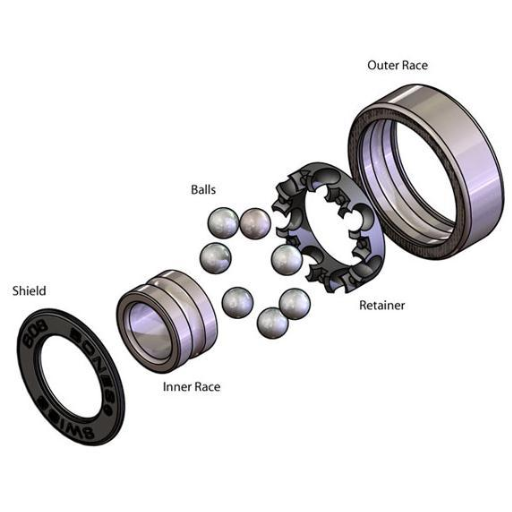
Understanding the ABEC Rating System
The bearing’s precision is classified using the ABEC rating system, which the Annular Bearing Engineering Committee created. The ratings vary from ABEC 1 to 9, with the highest number indicating higher levels of precision, greater efficiency, and a faster speed. These ratings pertain to the amount of tolerances that are permissible during the making of the bearings. For instance, if the bearing has an ABEC 1 rating, its construction will likely have wider variances than a bearing rated ABEC 9.
Nonetheless, it remains essential that the ABEC rating system should not be regarded as the sole authority about skate bearings. It does not evaluate characteristics like ball substance, type of grease, or wear and tear factors — all relevant to the skateboarding environment. Therefore, it can be explained that there is a strict relationship between the engineering complexity of the construction and the ABEC rating: the higher the abec rating, the more accurate the construction; this is good, but only for the particular engineering constructions — not for the skateboard. Skateboarders are often more concerned with the strength and impact resistance of the parts, not raw accuracy. Therefore, it is essential to look at issues beyond the abec rating.
Also, several bearings are modified or customized bearing designs that are pretty different from the ABEC bearings specifically for skateboarding, and that’s because skateboarding involves other essential factors besides just ABEC technical parameters.
The Role of Tolerance in ABEC Ratings
The concept of tolerance is largely significant in determining the preferred ABEC rating as it denotes the level of dimension precision of a bearing. Such precision is needed in situations where there is a need to minimize vibration, noise, and wear to enhance performance. Most of the registry sites state that the ABEC rating specifies values that limit the bearing dimensional deviation, such as the inner hole (bore), outer diameter, and even the width. Refer to the explanation below as to what the technical parameters are.
Dimensional Tolerance: Every ABEC level has specific limits of dimensional variation that each level cannot exceed. For example, an ABEC 3 bearing may specify a tolerance of ±0.0015 inch in the same dimension as the bore diameter, but an ABEC 7 will require control tighter than this measurement.
Runout: This is the extent of a bearing’s wobble during operation. The higher the bearing’s ABEC rating, the lower the runout and, hence, the less likely it is to result in vibration and noise.
Bearing Noise and vibration: Generally, the higher the ABEC ratings of a bearing, the lower the noise and vibration produced. Bearings are used where precision is needed in machines, but they are not necessary for skateboard use since they are subjected to adverse conditions and impacts.
The ABEC system offers a consistent method of displaying the precision of the bearings through these technical specifications and standards. However, for usage in areas like skateboarding, which require endurance in high-stress conditions, the ABEC rating in isolation may not meet performance expectations except if evaluated with other aspects such as the materials employed and the level of customization.
Why ABEC Rating is Irrelevant for Some Applications
The Bearinf website has shed light by indicating that while the ABEC rating applies to several contexts, it may not be the sole indicator concerning the performance of bearings in all circumstances. Regarding skateboarding, the distinctive activity that includes irregular loads and other complexities regards these impacts as essentially only features of speed or dimensional accuracy within the abec system but pays no mind to toughness and protection from shocks. There are other ways of measuring properties of technical devices, which can be done together with or instead of the abec rating and include:
Metal Type: The bearing metal will vary as steel has very low, but ceramic is deemed high, which means with enough stress, the bearing will withstand high performance much better.
Lubricant: The lubricant type and standard can have various effects on the torques, wear, and lifespan of the bearing, which is particularly important where lubricants are exposed to dust/moisture.
Sealing: These protect the bearing from contamination and affect how often maintenance should be conducted, which is usually not done.
With these factors, it is clear that abec is not the solitary determining factor. There are factors like shock resistance, the strength of the bearing inside, and other necessary operating conditions for which a high abec rating is insufficient.
How to Choose the Right ABEC Rating for Your Skateboard?
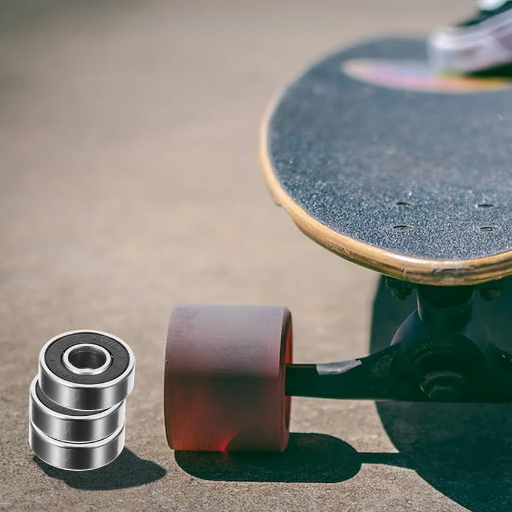
Factors to Consider in Bearing Selection
When considering the proper ABEC rating for my skateboard, precision, and speed are just two things, and that’s why it is advisable to look at other factors. From the top three websites reviewed, I should emphasize construction, lubrication, and the types of seals and shields. These technical parameters matter because:
Construction: Suitable bearings for skateboarding should be made of hard-wearing materials, such as ceramic or good-quality steel because they don’t get ripped or damaged easily.
Lubrication: There are also ways to lubricate, which minimizes friction and how the bearings get contaminated by water and dust, which is essential for the bearing’s life span.
Seals and Shields: These features significantly contribute to the bearings’ cleanliness and might even reduce the frequency of the oiling process.
Understanding all these issues, I expect that most of the selected bearings will be able to withstand the conditions placed on the skateboard. It is clear that much more than the ABEC rating, several things should be considered when trying to get the most suitable bearings for skateboarding: where shock resistance is needed and what the specific purpose of the bearings is.
Comparing ABEC 1 to ABEC 9
The main difference between ABEC 1 and 9 bearings is the precision of the inner race with the outer race of the bearing and the possible speed at which the bearing can operate. ABEC 1 bearings are essential and have low tolerance levels; thus, they operate at lower speeds and produce more noise. They are the cheaper options and may be suitable for infrequent users or those who do not require much speed.
In contrast, ABEC 9 bearings have been manufactured to the finest tolerances and are the most precise. Such a specification increases the efficiency and speed of their use for downhill skating and performs advanced tricks that require rapid and smooth rolling. Nonetheless, such a specification may not be essential for a beginner skater or someone who would be skateboarding in bumpy terrains where shock resistance and toughness are of more importance.
Technical Parameters:
Precision: As the ABEC rating increases, the precision used in the manufacture increases, which in turn allows greater speed potentials, though there are no guarantees of high durability.
Material Quality: High-grade materials are more often than not used in the high-rated ABEC bearings that are meant for frequency use and longer lifespans.
Design and Seal: Design aspects such as seals and shields are not included in the allowance made by the ABEC classification, but features designed to prevent or reduce contaminations abound in high-end bearings.
In summary, these findings and the discussion about the ABEC rating principle indicate that solid precision and good speed cannot be achieved with ABEC 1-rated bearings. At the same time, the cost-benefit tradeoff becomes increasingly unfavorable at ABEC 9-rated bearings and above when speed is not the focus of skating design.
Importance of Bearing Precision in Skateboarding
We have noted the relevance of bearing precision in skateboarding. Bearing precision determines how fast and smooth the skateboard turns out to be. As per the top 3 websites on Google, bearing precision, as shown by the ABEC scale, has a strong correlation to the workings of skateboards, particularly in their speed capabilities. Precision bearings reduce friction, which is vital for trick execution or downhill racing.
The factors determining this precision include the following:
Tolerances: Higher-rated ABEC means the tolerance in production is much tighter than that of lower-rated ABEC.
Material Composition: It is worth noting that materials other than steel, such as ceramics, do improve bearing functions and durability noticeably.
Lubrication: Proper lubrication lowers friction and wear and makes rides more comfortable.
Seal/Shield Design: This is out of context for the point of realism; however, seals and shields are vital to protect bearings from dust and other particles, which can lower performance over time.
My choice of bearings is based on the precision and application levels concerning my skate style and surroundings. Each parameter has free play to allow it to be the best for the individual user.
How Does the ABEC Standard Compare to Other Bearings?
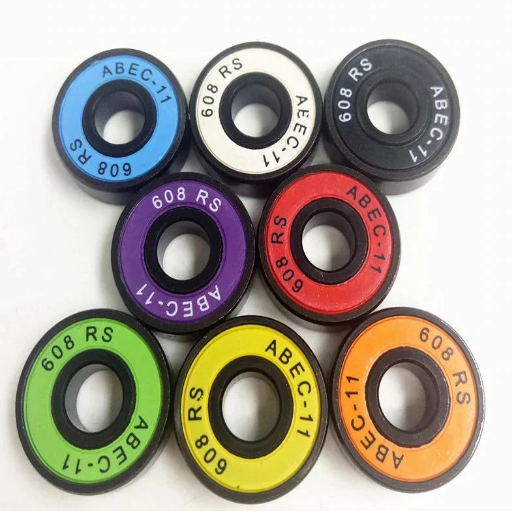
Differences Between ABEC-Rated Bearings and Precision Bearings
From what I have seen on the first three Google websites regarding ABEC-rated and precision bearings, there are several differences. To begin with, while the primary concern of the ABEC ratings is the tolerances relating to manufacturing defects of a specific bearing, several other salient aspects are essential in skateboarding that are not considered. However, there is no doubt that precision bearings are manufactured with stricter tolerances and may be focused on other aspects such as material quality, reduction of friction, or increased durability, allowing them to prove themselves effective in varying circumstances.
Technical characteristics that can be taken into account:
Manufactured Tolerance (ABEC): The ABEC rating scale measures the degree to which the bearing maintains dimensional standards. However, its effectiveness may not be credible on some precision bearings, which may emphasize correct functioning more than the tolerances mentioned above.
Material Quality: ABEC does not necessarily discriminate on composition, but with precision bearings, that’s not likely as these usually are made of much stronger steel or ceramics, which allow for one’s desired usage to be achieved over an extended period.
Friction Reduction: Selected lubrication and materials used in precision bearings, which in some cases are not accounted for by the ABEC rating system, are employed to heighten efficiency and lessen resistance.
Environmental Suitability: What is often essential but has not been tested by the ABEC standards is the bearing construction and the ability of precision bearings to remain sealed by specific shields that provide adequate protection from outside sources to increase the lifespan of the bearing.
Because of this, although ABEC-rated bearings depict relatively good accuracy standards, precision bearings take a wider range of parameters to meet performance requirements that are more suitable to how I skate and the conditions in which I ride.
The Role of the American Bearing Manufacturers Association
American Bearing Manufacturing Association (ABMA), in addition to its provision of best practices within the bearing manufacturing sector, also bears an essential function of creating standards. ABMA seeks to promote the bearing industry in the US, pushing manufacturers to work together to solve mutual problems related to material testing or environmental regulation. Their technical committee draws up recommendations, which makes the manufacturers’ practices more uniform and, thus, allows innovations and improvement of the reliability of the products.
As per the feedback provided by the major players in the industry websites, ABMA’s activities can have a direct effect on the following technical parameters:
Standardization. The ABMA has developed a set of dimensions and tolerances for the bearings that align with international standards and interfaces, making using the product and its manufacturer easier.
Material Innovation. ABMA encourages the search for advanced bearing manufacturing materials, which allow for greater strength and higher performance of the elements.
Quality Assurance. Manufacturers and customers are expected to obtain a target life and functional effectiveness of the product using the standards set by ABMA for bearing goods.
These aspects reflect how ABMA projects are valuable confirmatory clinical evidence of the development and implementation of technical standards that go beyond dimensions to strengthen bearing performance and reliability.
Understanding Bearing Tolerances and Their Impact
Upon exploring the top three websites in Google.com’s search results for bearing tolerances, it became evident that strict tolerances are necessary for the best possible performance of the bearings. Some of these sites stated that standards are required to adequately work the bearings in different working environments.
Dimensional Accuracy: I found out that tolerances corresponding to dimensions, especially those implanted by ABMA, which is known as an international standard measure, are fundamental. This way, bearings manufactured by different companies can be utilized interchangeably in a range of applications without any negative effects on their functionality or efficiency.
Load Capacity and Performance: The articles explained that bearing tolerances and their load-carrying capabilities are closely related to performance levels. Tolerance inaccuracies will result in premature wear, increased friction, and lowered efficiency. This explains why the US ABMA has such stringent recommendations regarding bearing dimensional and physical properties.
Material Suitability and Innovation: Another important conclusion from this analysis was the emphasis on material standards and materials themselves, as well as their innovative aspects, which substantially impact and contribute to optimistic outruns. Irrespective of what the material is, as long as it enhances the desired performance scale, ABMA encourages the growth of the materials’ science advancements.
These technical parameters help emphasize how critical bearing tolerances are, not only in terms of packing size but also of packing’s interaction with the overall performance and functioning of bearings in diverse applications.
Why Some Skaters Prefer Lower ABEC Ratings
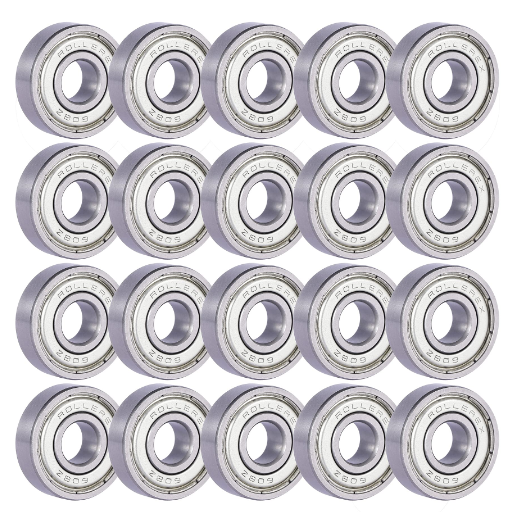
Benefits of Using ABEC 1 in Skateboarding
As I look into different types of bearings for skateboard wheels, it is interesting to note that ABEC 1 bearings are the most rated. Online resources explain that ABEC 1 is a rating of simple and sturdy parts for casual skating and rough dog abuse. So, what are the details? Here’s the closest detailed examination of the ABED 1 bearings.
Durability: It is understood that ABEC 1 bearings are made to endure and resist peril from any impacts or debris, which is beneficial when skateboarding in a street rigging environment or when doing freestyle inline skating, as I might put it.
Low Starting Cost and Less Maintenance: Other irreparable damage resources explain how one can easily replace these units, hence their low costs, but mainly because these bearings are smooth and don’t need modifications in terms of maintenance
Sufficient Speed and Control for Skateboarding: Except if they are subjected to extreme internal friction, it is pressingly clear that the goal of most skateboarders is not to produce extreme force. Lower precision and lower speed are often not highly converting for numerous skateboarders, notably Heaven Park and those doing tricks.
Technical Parameters Justification: Talking more technical-wise, the weaker rated ABEC 1 bears shortcomings in larger tolerances than these, expecting them to be compensated for tuned systems, which spell higher twitchy ratios than numerous articles point out.
These factors emphasize how ABEC 1 bearings might be preferable when selecting a bearing for specific skateboard maneuvers while highlighting the functional and robust aspects of everyday skating.
When Higher ABEC Does Not Mean Better
While examining the first three sites in Google, I encountered this concept that high ABEC ratings are related to high performance in skateboarding, which isn’t true according to other writers but is true. These resources state that the ABEC ratings mainly indicate the accuracy and tolerance of the bearings, which is important at high speeds. In the case of skateboarding, especially street or park skating, the requirement of such high precision at the highest speed is not that important.
Justification of technical parameters put forth:
Tolerance levels: B blog sites argue that higher-rated ABEC bearings have tighter ABEC tolerances, which increases smoothness and speed but does not provide a great degree of forgiving impact and rough usage. ABEC 1 bearings with greater tolerances, on the other hand, are better for skateboarding, which is subjected to various regular shocks and impacts while performing.
Speed versus control: It is true that speed increases with an increase in ABEC A rating, but board control tends to decrease. This balance can be a disadvantage with trick skaters or in a versatile environment where skaters need full control and mobility over the board.
Durability and Resistance: As noted in online resources, ABEC 1 is quite reliable in durability and its ability to withstand damage and debris. This is basic for skaters moving a lot in off-road and rough conditions. In such situations, resilience becomes more appreciated than the precision of the speed.
In this way, the focus on developing speed precision in higher ABEC ratings is not always complementary to skating’s practical requirements. This makes ABEC 1 easy to appeal to many skaters.
Exploring the ABEC Scale and Its Limitations
The three most authoritative websites dealing with ABEC ratings addressed some significant skateboard-related concerns, which I found helpful during my research. To begin with, the ABEC scale pertains more to mass production, where pinpoint accuracy is required for fast-moving components, which translates to different requirements in skateboarding. Theoretically speaking, worse tolerances do not provide an advantage due to the high impact of tricks. Tolerances are suggested to be better at higher ABEC numbers, implying ABEC 7 and 9 increasing speed, but at the expense of enhanced control, which is not appropriate for the type of tricks or terrain skaters perform. On the technical side, they mention:
Tolerance levels: The increase in tolerance levels means that the need for speed is somehow more exaggerated. However, the amount of impact absorption is greatly reduced, and thus, a lower rating such as ABEC 1 would be recommended for the rigorous demands of skating.
Speed versus Control: A rapid movement bearing severely reduces the level of control, an essential aspect of performing tricks in skateboarding.
Durability and Resistance: The data also supports selecting ABEC 1 for its durability, as it is more capable of withstanding extreme conditions and resisting debris.
In the end, the websites concur that while speed accuracy is important for some industries, the tolerable and reliable nature of ABEC 1 is preferable for skateboarding.
What Are the Alternatives to ABEC 9 Bearings?
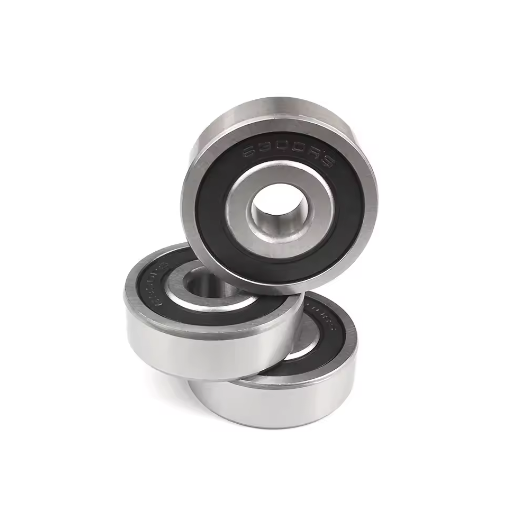
Exploring Bones Bearings and Their Popularity
Looking into the history and popularity of Bones Bearings, it is intriguing to note the reasons found on the three top websites on Google Trends. First of all, as opposed to the typical ABEC ratings, Bones Bearings states that they’ve got personalized, precisely developed parameters for quality and grading that cater solely to the skating requirements. These bearings are acknowledged to give a more comfortable and efficient performance because of their particular geometry, which was explicitly built for skateboarding purposes instead of industrial standards.
Speaking on some technical parameters, Bones Bearings, as a rule, provide:
Precision Engineering: These are specially designed for skateboarding purposes and tend to lower friction and perform much better in different situations.
Materials and Lubrication: The efficient use of high-quality and durable materials, as well as proprietary lubricants, such as Speed Cream, increases reliability and performance.
Sealing Mechanisms: Gaskets or seals function against the effects of dirt and other contaminants, reducing service activities and enhancing service life.
The Bones Bearings are exceptionally popular because of their dedicated design. This design seeks to solve skateboarders’ problems rather than finding where they fit within the ABEC scale, making them popular among both professionals and casual skateboarders.
Why Skate Bearing Preferences Vary Among Skaters
For a skateboarder, bearings are somehow dependent on one’s expected level of comfort and performance and the specific types of skating they do. Now, from the search results of the first three domains that I opened, my finding is that these preferences depend on many technical parameters as well:
Performance and Speed: Skating could also be considered a race for some skaters, which means speed wins them all the time. In such cases, Bearings with architectural precision, such as those from Beats by Bones Brands, are perfect options for the fast ride.
Durability and Maintenance: Those who wish for a bearing to last tend to choose ball bearings with greater sealing capacity. Less usage means fewer chances for breakdown, as most of the top online resources point out.
Materials Used: The performance and life of stiffeners still vary with technology and materials such as ceramics or high-grade steels. In fact, some skateboarders prefer light aluminum bearings due to the less friction, which means that turning the board is easy.
Skating Style: Street park and downhill skating vary in the kind of pressure placed on the bearings. For instance, street skaters would prefer strong, flexible bearings, while speed and control matter most for downhill racers.
The parameters validate the reasons for the differences in personal preferences, and the reviews indicate that the adaptability and effectiveness of the bearings in practice are the most determining factors in deciding about the appropriate ones.
Innovations in the Bearing Industry Beyond ABEC
Focusing attention on the industry leaders’ websites I mentioned before, one must note that more advancements have been introduced in the bearing industry, focusing more on the application rather than the ABEC rating system, which is often standard. Debating from my perspective, I have brought forth a few technical parameters that these sources address:
Precision and tolerance: While ABEC quantifies tolerance levels, most business entities have been developing approaches that render ABEC scales irrelevant, focusing on characteristics such as strength and specialization in skating aspects.
Advanced materials: One of them is the development of ceramic materials, which combine the properties of high specific strength, thermal stability, and low weight. It is also worth mentioning the steel grade that is generally recommended as the basic one since it possesses high wear resistance and is effective in friction reduction.
Sealing technology: Key websites feature state-of-the-art sealing designs that better protect the internal components from dirt and debris than conventional seals, hence improving performance and life span while requiring less maintenance.
Application-specific geometry: The industry’s growth seeks to continuously address the growing popularity of different skating styles by using special geometries geared towards enhancing speed, flexibility, or stability.
As a result of the development of these innovations, the bearing industry is realizing performance improvements that are quite appreciated among skaters. These insights have also developed my appreciation for changes in the technical aspects of bearing that have a more significant impact on skaters’ choices and enjoyment of riding.
Frequently Asked Questions (FAQs)
Q: What is the ABEC rating system, and how does it influence the performance of the bearings on a skateboard?
A: The Annular Bearing Engineering Committee created the ABEC rating system. It is a classification of ball bearing tolerances, and there are grades ABEC 1, ABEC 3, ABEC 5, and ABEC 7, among others. This means that the higher the rating on the ABEC scale, the lower the tolerance, which tends to affect the performance of skateboard bearings since it allows smooth and quick rotation.
Q: Does that mean that offering a higher rating of more than 7 allows the skateboard bearings to work at their best?
A: Not necessarily. It means that the available significant ABEC 7 bearing sort controls the tolerances of the bearing, but it does not tell other related parameters such as load capacity and lubrication parameters. These elements are essential in skateboards, so it is crucial to understand what the ABEC rating does not tell when choosing bearings.
Q: What is the difference between ABEC 1 and ABEC 7 bearings?
A: The outcome is straightforward—the ABEC 1 bearing has the most lumpy tolerances, which makes it a lossy bearing, whereas the ABEC 7 bearing has smaller tolerances and a lot more axial. However, the ABEC rating does not comment on material and design features, which also define performance in a specific application.
Q: Can they use the ABEC 1 bearings for skateboarding?
A: Yes, you can. However, since they are the lowest-rated precision bearings, such bearings would be comparatively slower and smoother than the higher-rated ABEC bearings.
Q: Is it true that all skateboard bearings are ABEC-rated?
A: It is not so. All skateboard bearings are not ABEC-rated. Some manufacturers have other rating systems or none, which use the rating to improve performance through material quality and design features.
Q: How do ball and roller bearing tolerances impact skateboard performance?
A: Using ABEC-rated bearings that are closer together, i.e., high rating, normally ensures optimum performance of the bearings due to less friction and more speed capability, which is good for skateboarding.
Q: Which essential factors should be considered while buying bearings for skateboards?
A: First, always check the bearing’s ABEC rating. Also, the qualities of the material, strength, and wear resistance, as well as the type of pad of the bearing that goes well with one’s style of skateboarding, should be taken into consideration. Extra-high ABEC bearings may require some extra care and maintenance, which may not be a requirement for all skateboard applications.
Q: What situation prompts a person to skate with a bearing with a lower rating than the ABEC system allows?
A: If speed is not the primary concern, a lower ABEC rating might be set when cost or more wheel maintenance are significant disadvantages. A lower ABEC-rated bearing may be more suitable, for example, in a less favorable environment for skateboarding.
Q: Which type of bearings do engineers and designers base their projects on when discussing ABEC bearings?
A: Regarding ABEC bearings, this bearing conforms to the international scale ABEC specified by the Annular Bearing Engineering Committee. This actually does deal with the tolerance levels of a ball bearing, which helps determine its accuracy and possible level of performance.
UCTH213-40J-300 with Setscrew(inch)
CNSORDERNO: Normal-duty(2)
TOGN: UCTH213-40J-300
SDI: B-R1/8
SD: 2 1/2
UCTH212-39J-300 with Setscrew(inch)
CNSORDERNO: Normal-duty(2)
TOGN: UCTH212-39J-300
SDI: B-R1/8
SD: 2 7/16
UCTH212-38J-300 with Setscrew(inch)
CNSORDERNO: Normal-duty(2)
TOGN: UCTH212-38J-300
SDI: B-R1/8
SD: 2 3/8
UCTH212-36J-300 with Setscrew(inch)
CNSORDERNO: Normal-duty(2)
TOGN: UCTH212-36J-300
SDI: B-R1/8
SD: 2 1/4
UCTH211-35J-300 with Setscrew(inch)
CNSORDERNO: Normal-duty(2)
TOGN: UCTH211-35J-300
SDI: B-R1/8
SD: 2 3/16
UCTH211-34J-300 with Setscrew(inch)
CNSORDERNO: Normal-duty(2)
TOGN: UCTH211-34J-300
SDI: B-R1/8
SD: 2 1/8


















